QUESTION 41 a appropriate for gestational age AGA b large fo
QUESTION 41
a.
appropriate for gestational age (AGA)
b.
large for gestational age (LGA)
c.
proportionately small for gestational age (pSGA)
d.
very small for gestational age (vSGA)
e.
disproportionately small for gestational age (dSGA)
A baby born to a single mom who lost her job and experienced a severe food shortage near the end of her pregnancy is more likely to be classified as _____.
1 points
QUESTION 42
a.
calcium
b.
phosphorus
c.
fluoride
d.
choline
e.
vitamin D
Pregnant women should consume higher amounts of _____ than non-pregnant women.
1 points
QUESTION 43
a.
preeclampsia
b.
gestational diabetes
c.
type 2 diabetes
d.
type 1 diabetes
e.
gestational hypertension
The majority (88%) of all cases of diabetes in pregnancy are _____.
1 points
QUESTION 44
a.
ketones
b.
insulin
c.
oxygen
d.
water
e.
cholesterol
Which substance is unable to be transported across the placenta?
1 points
QUESTION 45
a.
6 lbs 3 oz to 7 lbs
b.
5 lbs to 6 lbs 2 oz
c.
7 lbs 12 oz to 10 lbs
d.
4 lbs 11 oz to 5 lbs 5 oz
e.
10 lbs to 12 lbs 2 oz
Infants weighing _____ are least likely to die within the first year of life.
1 points
QUESTION 46
Routine salt restriction is advised to lower the risk of preeclampsia.
True
False
1 points
QUESTION 47
a.
between 24-28 weeks of gestation
b.
Pregnant women without diabetes do not need to be screened.
c.
after the first trimester
d.
at 17 weeks of gestation
e.
between 6-8 weeks of gestation
According to the American Diabetes Association, when should pregnant women without diabetes have their blood glucose tested?
1 points
QUESTION 48
Neural tube defects are among the most preventable types of congenital abnormalities that exist.
True
False
1 points
QUESTION 49
a.
smoking
b.
high levels of body fat
c.
physical inactivity
d.
vitamin D sufficiency
e.
frequent intake of processed meats
Chronic inflammation and oxidative stress are decreased by _____.
1 points
QUESTION 50
a.
red meat
b.
vegetables
c.
grain products
d.
fish and seafood
e.
nuts
A pregnant woman advised to increase her intake of eicosapentaenoic acid (EPA) and docosahexaenoic acid (DHA) should consume _____.
1 points
| a. | appropriate for gestational age (AGA) | |
| b. | large for gestational age (LGA) | |
| c. | proportionately small for gestational age (pSGA) | |
| d. | very small for gestational age (vSGA) | |
| e. | disproportionately small for gestational age (dSGA) |
Solution
Answers
41. D
42. A
43.
44. B
45. C
46. False
47. A
48. False
49. A
50. D .
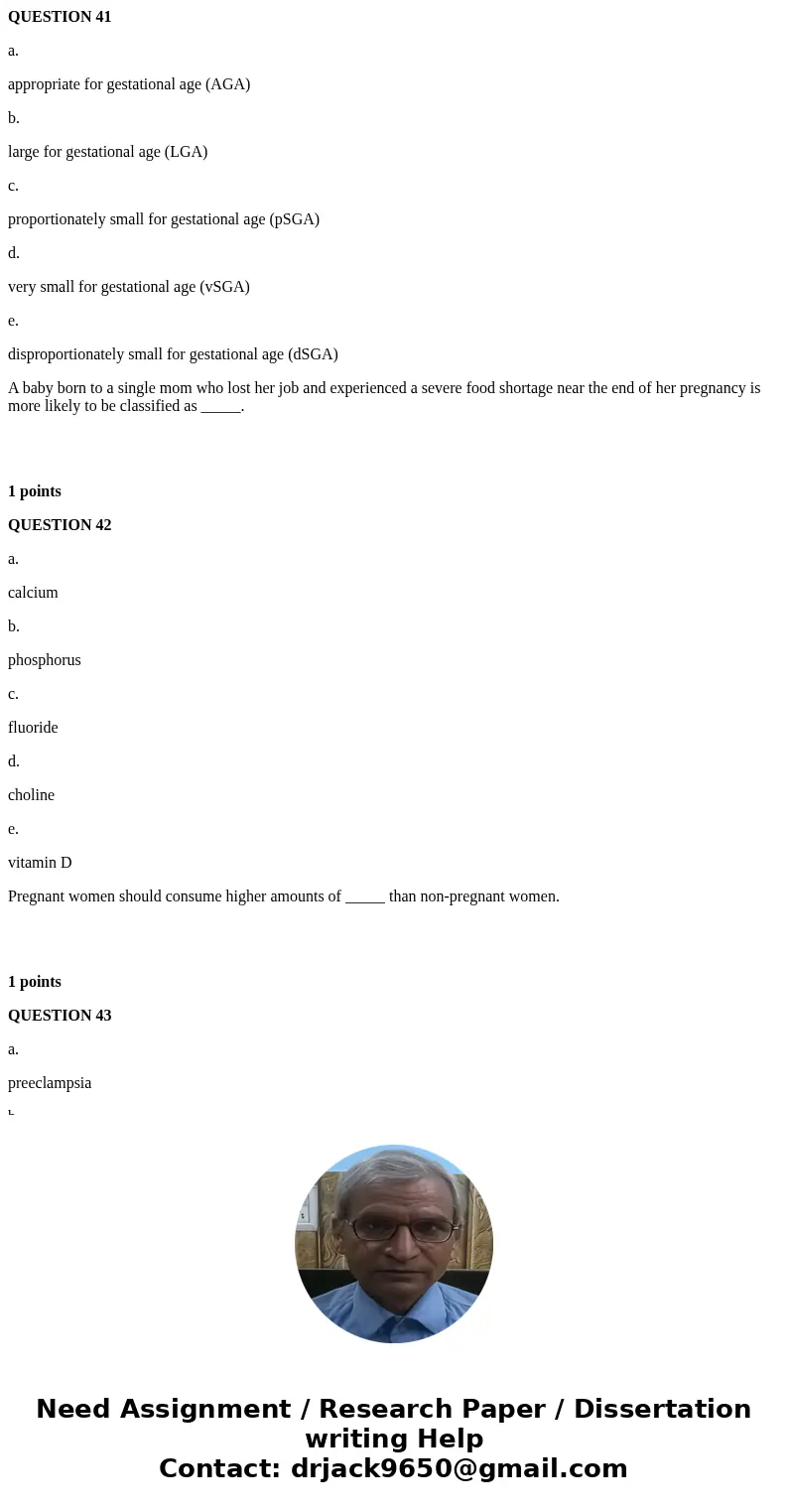
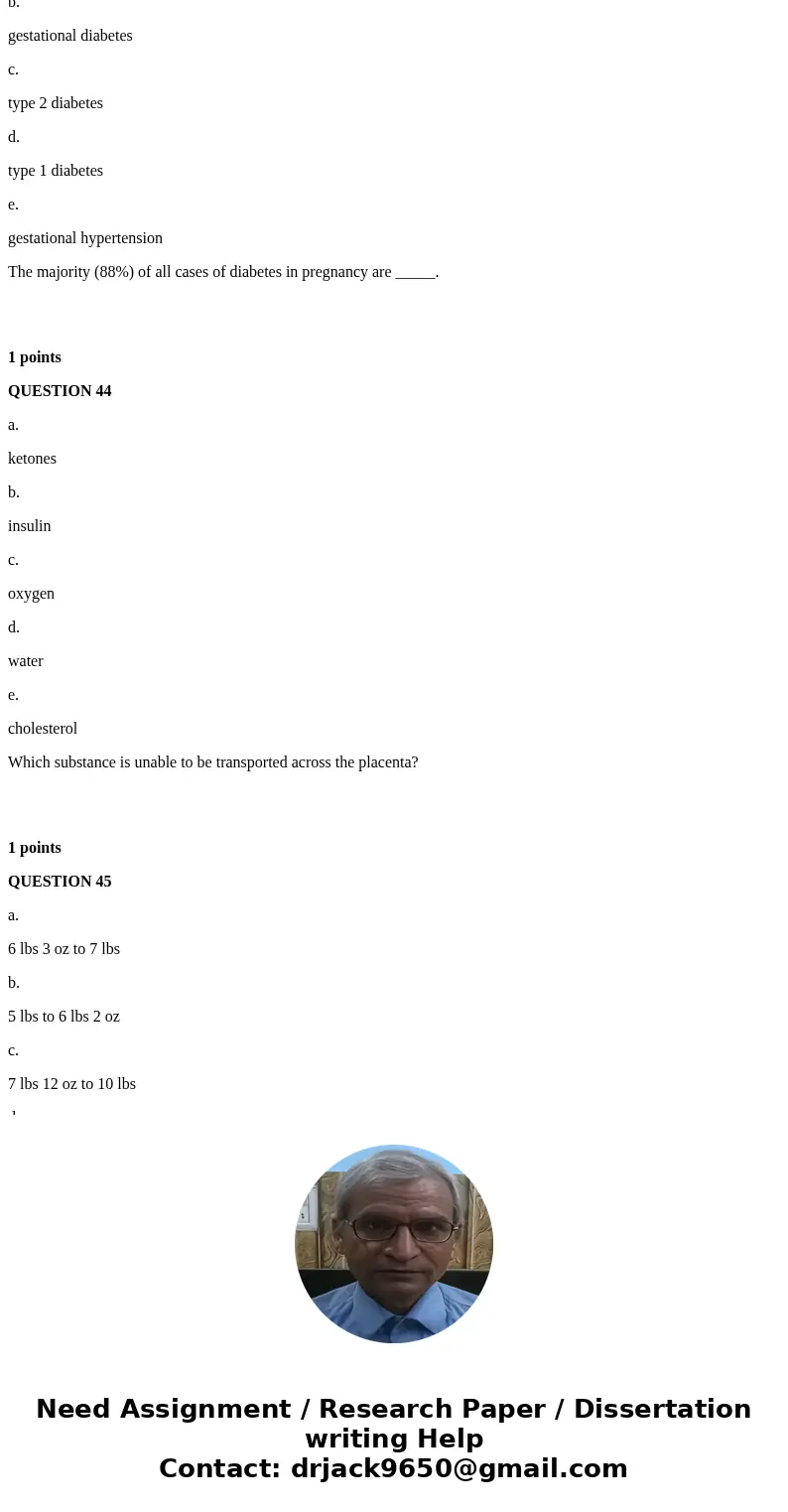
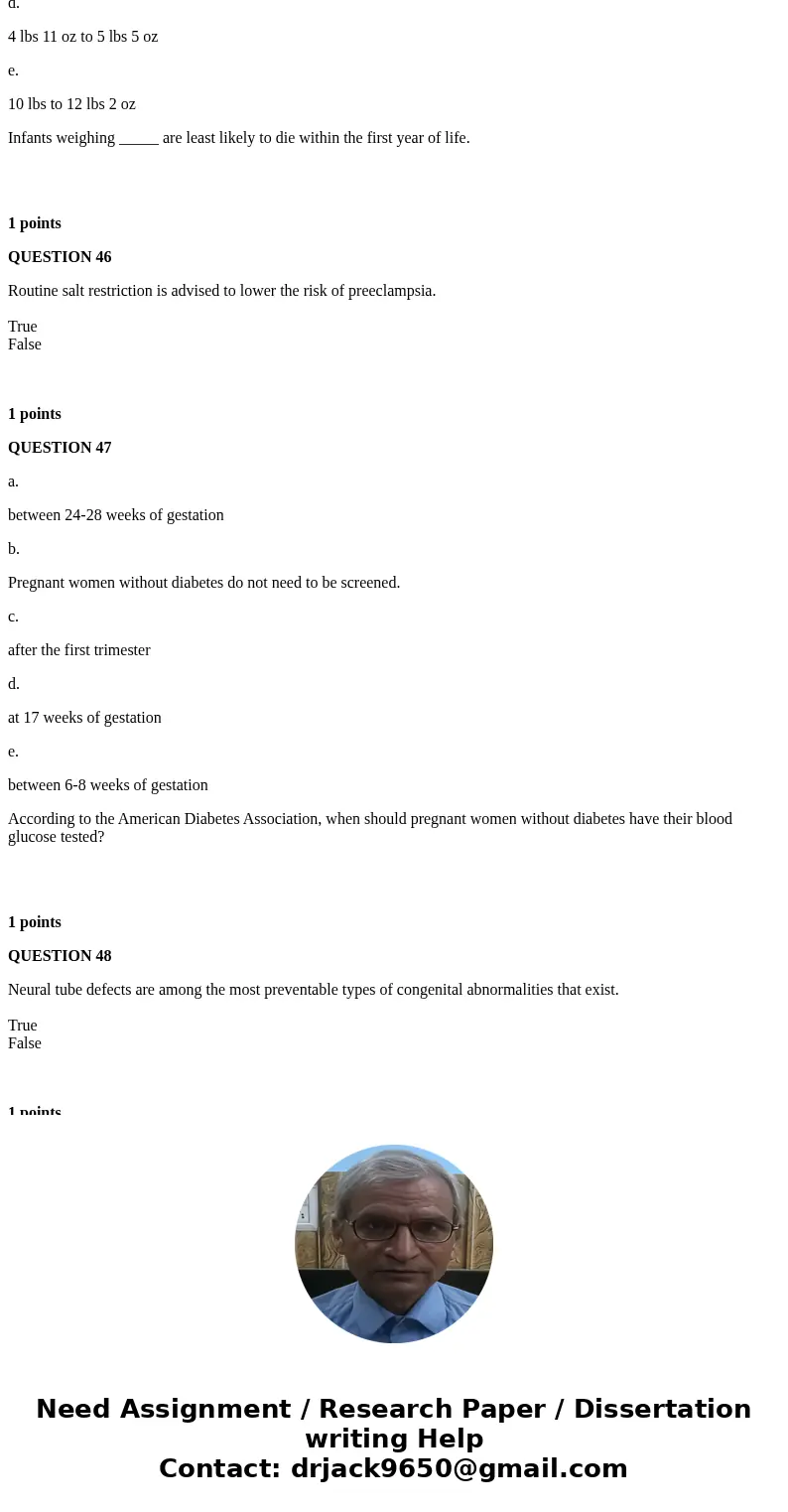
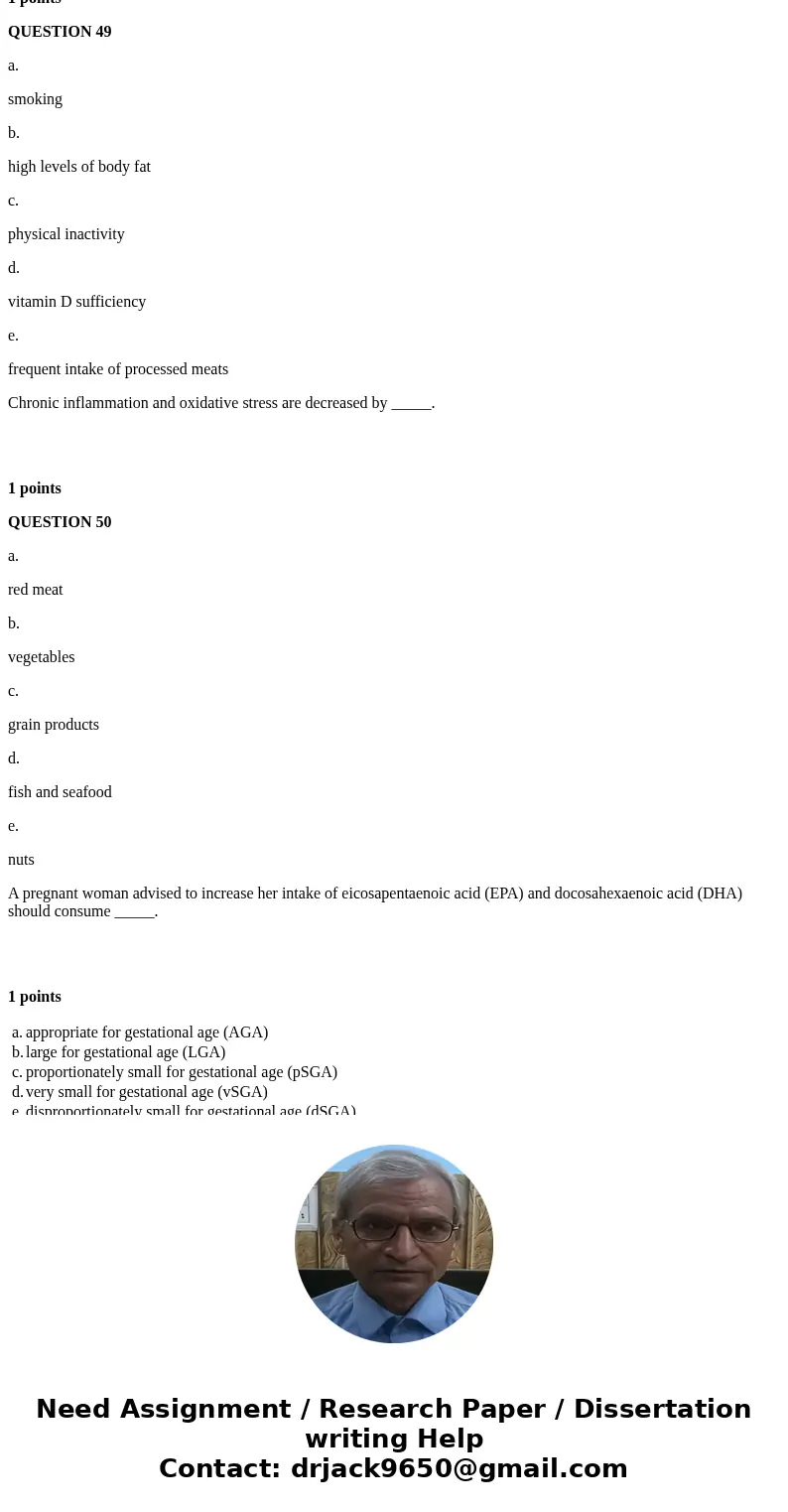
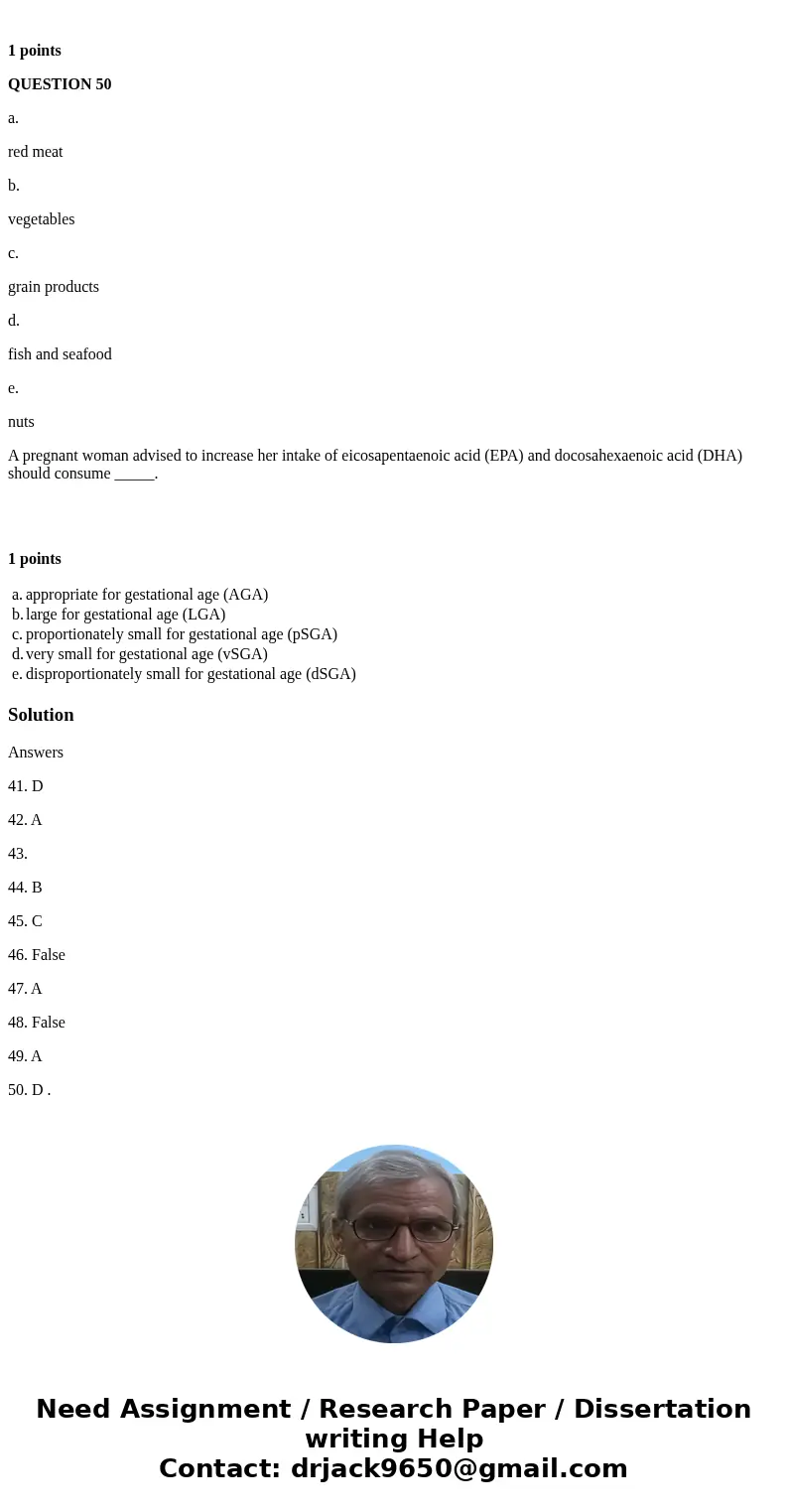
 Homework Sourse
Homework Sourse